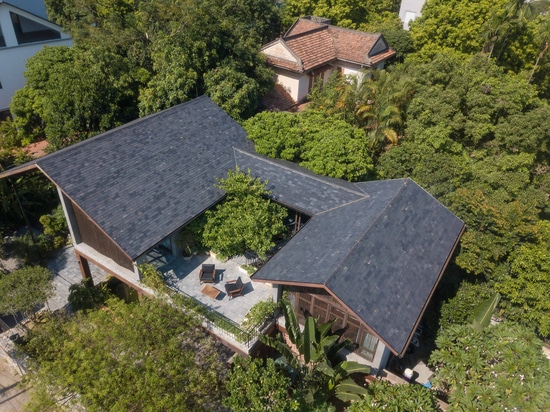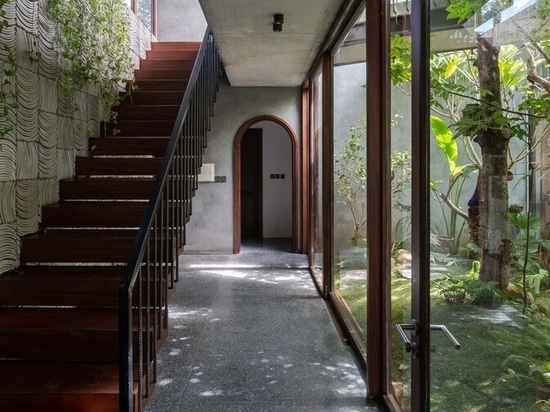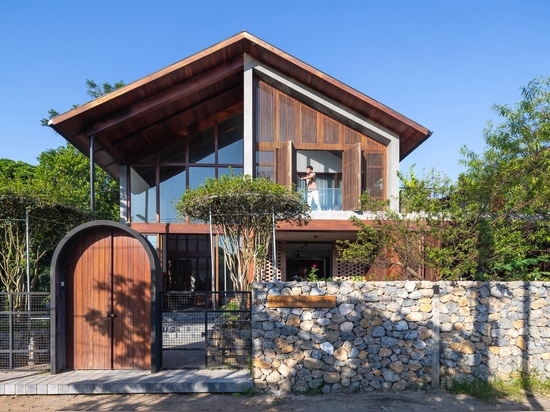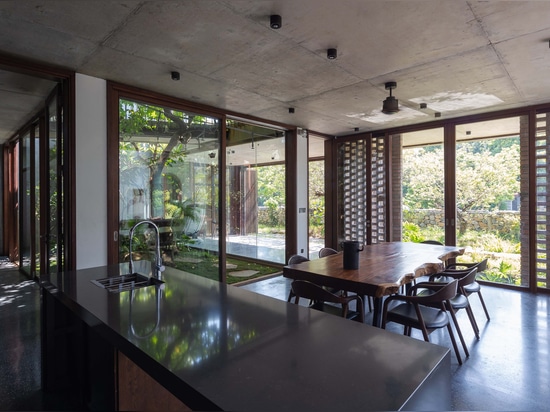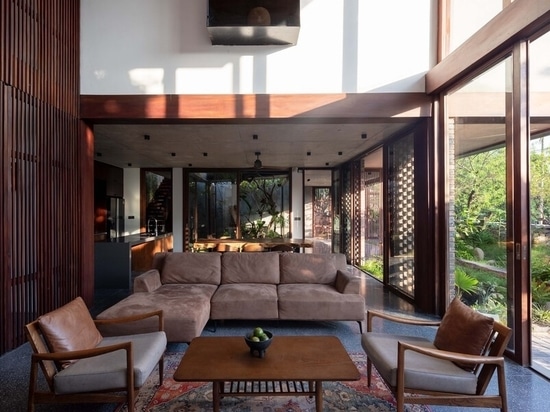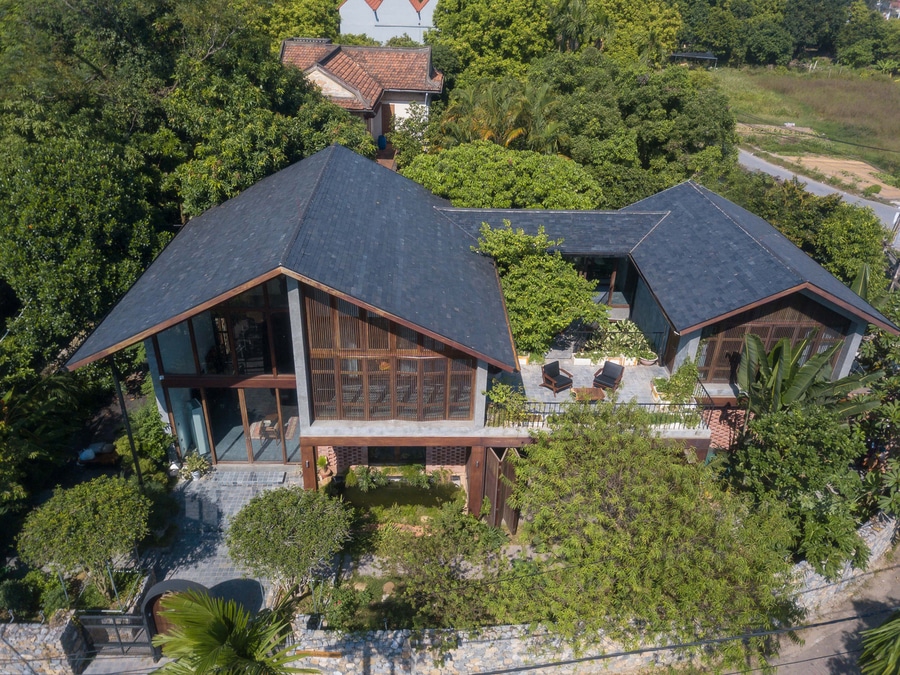
#RESIDENTIAL ARCHITECTURE PROJECTS
Nôm Villa / PAK Architects
Nom village, which has a long history and culture, is where the project takes place. The owner of the place is a family that has been living here for three generations. The house was built to be a settlement for a 70-year-old couple and for family gatherings every now and then with the wish that this place would harmonize the rural scenery of the village with the graceful and gentle atmosphere of the villa.
Project approach - With more than 300 years of history, Nom village has been one that could preserve its unique raw beauty with antique houses, old trees, ponds, a communal house courtyard, the village entrance gate, and so on. This collection of constructions, a typical example of northern architecture, is connected to the culture, feelings, and childhood of the people in the owners’ family as well as the villagers. The architect wanted to create a housing space, in which traditional values could be transcended in a contemporary way, yet, fits with its surroundings and the family’s taste. People in the house can share their feelings and connect with nature without any ‘barrier’. The precious part is when this culture is adopted by the younger generation, they inherit and live on the tradition, and this will automatically connect people in different generations together. Distinctive details, which carry typical architecture like the veranda, traditional roof tiles, village entrance gate, or hall, were slightly brought into the villa’s design. Not only creates an aesthetic atmosphere, but it also improves the climate in the house and the connection between different places within.
General planning solutions:
1. Total ground area - 200m2
2. Reduce the volume of the whole construction, interaction with traffic route, and direct view
3. Connection - the creation of a central garden
4. Resolution form of the area
To meet the needs of users, the total ground area is approximately 200 m2. To create interaction with traffic routes and to reduce the volume of the whole construction, architects divided the whole area into 2 main houses. Using the same old tiles as other constructions in the village creates a conformity of the house to its surrounding. This area planning also resolves the problem of exploiting the main wind flow.
Surrounding performance- B-B layout: Having a long frontal with limited depth, the construction situates quite close to the baseline of the land, which results in a limited green area. The architect adjusted the elevation and created a landscape axis that connects both inside and outside green scenery, making both spaces unite. This space arrangement helps free the orientation from inside the house to the surroundings outside while maintaining its internal privacy.
Arrangement and connection solution for spaces: There are 2 main functional zones: the public zone and the sleeping area; they are separated by thy central garden and connected by a long hall with a veranda; this is also one of the northern architectural features. Loggias were adjusted in between different zones of the house, attributing a kind of gentleness to the space intersections and improving privacy in the household.
Especially, the interior was designed with 2 vast clear spaces: tranquil
. The 1st is the tube space cut through both stories in the living room to clear the air volume and connect the upper space at the children’s bedroom by an arched window which is a metaphor for a bird nest - the noise of children playing around along with adults in the family - creates a fun sound effect.
. The 2nd is the central garden. This space strongly connects other spaces together as a whole but also maintains the privacy of the main bedroom area. Functioning as a lively scenery of the house, this space makes room for natural light to sneak in freely inside the house. Swathes of sunlight gently lay on leaves, touching the heart of each family member.
. These loggias and the main hall apparently create an interesting chain of spaces as well as keep the privacy of each compartment of the house.
Materials: Roof tiles, wood, rock/stone, and exposed concrete were used in the construction, this creates a rustic and tranquil atmosphere to the villa. The star of the whole building is a wall decorated with yinyang tiles, which draws a unique traditional sensation to the construction.
Microclimate control: Aside from connecting and greening the place, the central garden plays an important role as a ventilation system for the whole building, creating the interflow of natural wind. This system improves the atmosphere inside as well as enhances energy-saving. The veranda, roof tiles, sun louver system, and loggias have created airy spaces for the house to avoid direct western sunlight.
